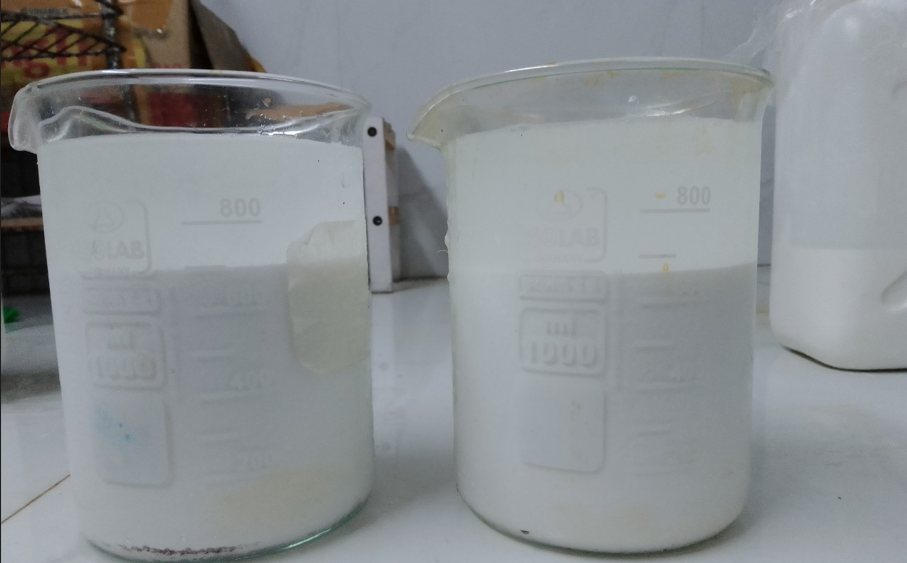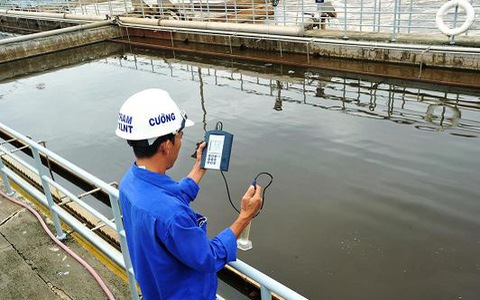
The food production and processing industry has always played a crucial role in Vietnam’s economy, yet the challenge of treating starch-containing wastewater is becoming a significant burden for many businesses. Existing treatment systems are often overloaded, occupy large areas, and have high operating costs, while the output water quality is unstable—posing a potential risk of violating environmental standards and incurring penalties.
At NGO International, with nearly a decade of specialized experience in the environmental sector, we offer more than just wastewater treatment solutions. We partner with businesses to turn challenges into competitive advantages—through advanced technology, space-optimized system design, cost savings, and ensuring that the effluent consistently meets standards.
I. Overview of Starch-Containing Wastewater
Starch comes in many forms, such as wheat starch, cassava starch, sweet potato starch, and potato starch. It is a common and vital raw material for numerous manufacturing and processing industries, including food production, seasoning, and bakeries. Some modified starches are used in industries like paper and packaging manufacturing.

Wastewater containing starch from the aforementioned production activities is often difficult to treat for the following reasons:
- The COD concentration in starch wastewater is typically very high (>3000 mg/l)
- Starch is very difficult for microorganisms to decompose, thus requiring very large treatment tanks that consume significant land area.
- The fermentation of starch will alter the pH & increase pollutant components like COD and TN in the wastewater.
- Starch creates high viscosity, which can easily reduce the efficiency of equipment and pipelines, making operations more complex, especially with temperature changes.
To treat starch wastewater effectively while saving costs and space for the treatment system, the efficient recovery of starch from the wastewater in the initial stage is of paramount importance.

NGO has conducted a series of experiments over several months with various reactions and has successfully found and applied a starch recovery solution:
- Recovery time: 7–45 minutes depending on the specific process applied
- Maximum viscosity reduction, TSS in wastewater after starch recovery step is only 400–600 mg/L, or even much lower.
- Simplified downstream treatment system, with a 30%–50% reduction in tank area.
- Reduced excess sludge generated during the biological reaction process, thereby reducing operating costs
The recovered starch can also be reused for various purposes or disposed of with the excess sludge.
II. Technology Description for Starch-Containing Wastewater Treatment
The treatment process for starch-containing wastewater:
Centralized collection of starch-containing wastewater from wheat, cassava, potato flour production…
Install a bar screen at the collection pit to remove large debris and solids. The water is prone to clogging due to starch deposition, so regular anti-clogging maintenance is necessary.
Stabilizes flow rate and pollutant concentration to prevent shock loading to the system, then the water is pumped to the starch recovery system to remove starch and treat viscosity.
Separates and settles starch, reduces viscosity; COD drops to 400–600 mg/L (removing 86–90% of influent COD).
Biological treatment of BOD and TSS with MBR membrane, maintaining microbial concentration at 5,000–8,000 mg/L.
Ensures compliance with QCVN 40:2011/BTNMT, ready for discharge or reuse.

The starch-containing wastewater, after treatment, meets the QCVN 40:2025/BTNMT standard for industrial wastewater.
III. Wastewater Treatment Results from Pilot Project
The table below compares the quality of starch wastewater before and after applying NGO’s solution, referencing QCVN 40:2025 (column B):
|
Parameter |
Unit |
Influent |
Treated Effluent |
QCVN 40:2011 (Column B) |
|
COD |
mg/L |
4480 |
36 |
150 |
|
BOD5 |
mg/L |
2540 |
15 |
50 |
|
TSS |
mg/L |
155.4 |
8.8 |
100 |
“Previously, the water quality from our WWTP at the factory was erratic and frequently encountered issues. Since implementing NGO International’s starch recovery solution, we have not only consistently met the Class A discharge standard but also significantly reduced operating chemical costs. We have been able to double our capacity with the same system we had invested in.”– Mr. D.V.H, Deputy General Director of Micoem Factory, Bac Ninh.
Video: Food Production Wastewater Treatment Plant
IV. Frequently Asked Questions
Starch-containing wastewater contains ultra-small colloidal particles (1–1000 nm) that are uniformly dispersed and do not settle immediately due to surface interaction and electrical charges, making impurity separation difficult.
Colloidal particles carry the same electrical charge, causing them to repel each other and prevent agglomeration. Additionally, the electric double layer surrounding the particles hinders coalescence, so they cannot settle easily.
Because it contains high levels of organic matter, oils, grease, colloids, as well as dissolved compounds that are difficult to biodegrade, making it hard for microorganisms and treatment chemicals to contact and break them down.
Yes. NGO provides a free survey and consultation package to assess the pollution source, analyze water samples, and propose a solution tailored to each client’s specific needs.
NGO has a team of highly experienced engineers who have implemented over 200 practical wastewater treatment projects, especially complex systems for starch-containing wastewater, giving businesses peace of mind regarding quality and investment efficiency.
See more:
https://ngoenvironment.com/en/conventional-methods-tec29.html
https://shopngoenvironment.com/en/product-category/industrial-products/
For consultation on starch-containing wastewater treatment solutions, please contact us at 024.7300.0890, or email us at office@8ngo.com

***Please carefully read the Terms of Use – Copyright requirements before copying or citing the content and images of this website.
This website is copyrighted by NGO International Co., Ltd. (NGO International). Any use or reproduction of the content, in whole or in part, in any form, is strictly prohibited unless explicitly permitted in writing by Us.

 Tiếng Việt
Tiếng Việt





